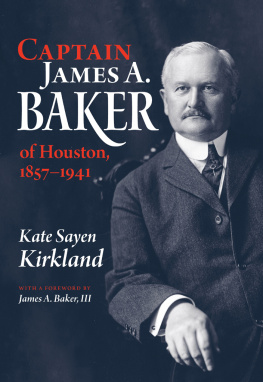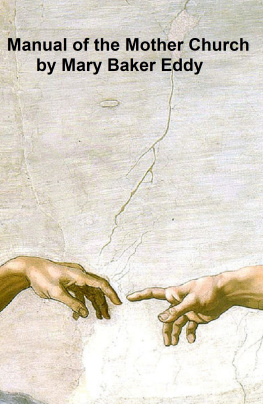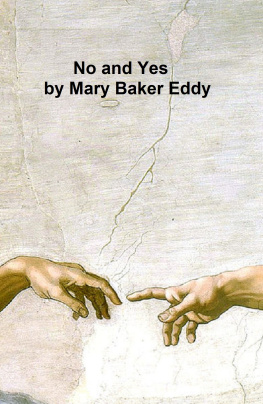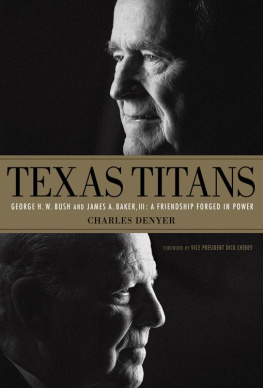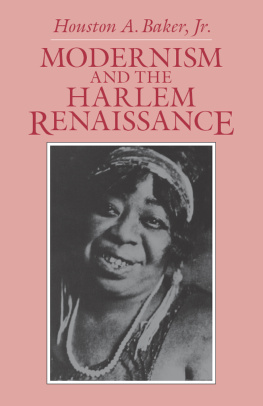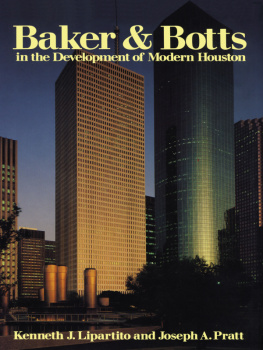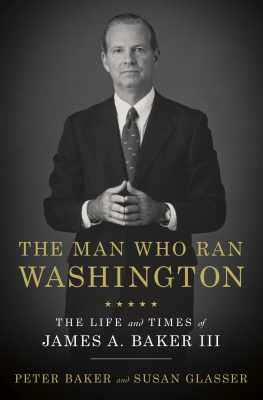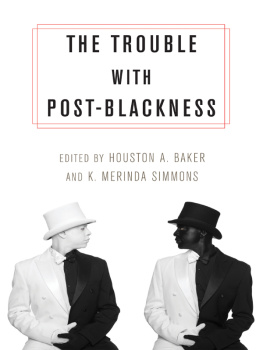Captain James A. Baker of Houston, 18571941
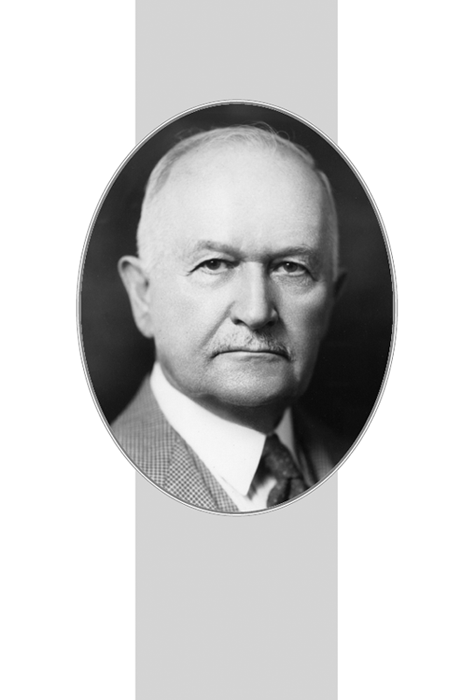
Captain James A. Baker of Houston, 18571941

KATE SAYEN KIRKLAND
FOREWORD BY
James A. Baker, III
Texas A&M University Press
College Station
Copyright 2012 by Kate Sayen Kirkland
Manufactured in the United States of America
All rights reserved
First edition
This paper meets the requirements of ANSI / NISO Z39.48-1992 (Permanence of Paper).
Binding materials have been chosen for durability.

LIBRARY OF CONGRESS CATALOGING-IN-PUBLICATION DATA
Kirkland, Kate Sayen, 1944
Captain James A. Baker of Houston, 18571941 / by Kate Sayen Kirkland ; foreword by James A. Baker, III. 1st ed.
p. cm.
Includes bibliographical references and index.
ISBN 978-1-60344-800-0 (cloth : alk. paper) ISBN 1-60344-800-4 (cloth : alk. paper)
ISBN 978-1-60344-797-3 (e-book) ISBN 1-60344-797-0 (e-book) 1. Baker, James Addison, 18571941. 2. LawyersTexasHoustonBiography. 3. BankersTexasHoustonBiography. I. Title.
KF373.B295K57 2012
340.092dc23
[B] 2011053004
: Captain James A. Baker. Private Collection.
: Captain Baker, 1930s. Private Collection.
For John David Kirkland, who inspired me
(June 6, 1933January 21, 2008)
Genius is the capacity for hard work.
Maxim of Judge James Addison Baker
Work hard, study and apply yourself closely, stay on the job, and keep out of politics.
Advice of Captain James Addison Baker
Prior preparation prevents poor performance.
Adage of James Addison Baker, Junior
Nothing is worth having that you dont have to work for.
Creed of his father and grandfather, Secretary James Addison Baker, III
Contents
Illustrations
Foreword
JAMES A. BAKER, III
As a child growing up in Houston, I was consistently reminded of my grandfather. I could not go very far in my hometown without seeing places that had been touched by his guiding hand. Close to my childhood home on Bissonnet Street was Rice University, which Captain Baker played a critical role in establishing. When I went downtown to see a movie or go to church, I would pass by buildings he had helped finance. And when I played tennis, I often did so at the Houston Country Club, which benefitted from his early direction. Houston in the first half of the twentieth century was built by towering individuals like Jesse Jones and Will Hogg. As the head of the citys premier law firm, the founding chairman of Rice University, and a leader in Houstons banking industry, Captain Baker defined integrity. These iconic figures envisioned Houston as a great city and worked throughout their lifetimes to make that dream come true. From my earliest memories, I was surrounded by the product of my grandfathers energy.
Of course, being the captains grandson came with certain responsibilities. It meant living up to high expectations when it came to hard work, to seriousness, to toughness, and to fairness. Grandfather was a man of genuine authority who maintained a dogged determination to achieve the aspirations that he established for himself, for his family, and for his city. And if I didnt always appreciate the example that Captain Baker set, my father, James A. Baker Jr., and my mother, Bonner Means Baker, were there to remind me of itnot only while he was alive, but also long after he passed away on August 2, 1941. I cant remember how many times they looked me squarely in the eye and said, Jimmy, you have quite a legacy to live up to.
As a result, it is especially rewarding for me to read this book that Kate Kirkland has written about my grandfather. She discovered parts of his rich history that I never knew, and some that I have long forgotten. Kirkland explains Captain Bakers role in the creation of Memorial Park. She recounts how Captain Baker helped his wife, Alice Graham Baker, establish the Houston Settlement Association, a volunteer organization that today is known as Neighborhood Centers Inc. And she includes the text of the very last letter that Captain Baker wrote before he dieda letter which he sent to me when I was only eleven years old, after I had passed my swimming test at a Texas Hill Country summer camp. Kirklands book, Captain James A. Baker of Houston, 18571941, is a well-researched biography of a man whom, as she writes, men and women turned to when they wanted a project to succeed.
But Kirklands book is much more than the tale of an influential man. It is a story about Houston during the first half of the twentieth century, when the foundation was laid for its transformation into the international powerhouse that it is today. Perhaps most importantly, it is a story that provides a lesson about what it took, and still takes, to create a great community. As she writes, Captain Baker lived in an era when loyalty to friends and family, courtesy to others, and duty to community defined a successful life. He searched for excellence because he wanted to do his best for those who relied on him. The legacy of Captain Baker and the other civic titans of his era is an important one because they were just as concerned with building a great city as they were with amassing great fortunes. By preserving the history of Captain James A. Baker, Kate Kirkland has done a real service to the memory of the man and the city he loved so much.
Captain James A. Baker of Houston, 18571941
PROLOGUE
October 1912

Illustration: Administration Building, October 1912. Early Rice Collection, Woodson Research Center, Rice University.
Captain James Addison Baker and his fellow trustees chose October 12, 1912, to inaugurate the William Marsh Rice Institute for the Advancement of Literature, Science, and Art. Board Chairman Baker and founding President Edgar Odell Lovett invited international luminaries from academia, government officials from the state of Texas, and regional leaders from business, banking, legal, and civic organizations to Houston to launch the fledgling university. That fall Houstonians and their guests who braved the mile-long muddy track extending south of downtown suddenly beheld an extraordinary spectacle, as of palaces in fairy-story... brilliant, astounding, enduring: rising out of the barren brown prairie which extended, unbroken save for a belt of trees, to the horizon. Walls of salmon-hued brick and pillars of white, gray, and purple marble appeared complete and magnificent, to face the setting sun and define the Rice Institute Administration Building and Sally port.
For twenty years Houstons civic leaders and journalists exchanged rumors that millionaire entrepreneur William Marsh Rice had endowed an institute for advanced education in his adopted city. Impatient to enjoy what promised to be a civic asset of extraordinary magnitude, some asked Rice why he did not begin building this seat of learning during his lifetime. After the donors death on September 23, 1900, others grumbled that the old mans hand-picked board of six trustees, led by attorney James A. Baker, was taking far too long to satisfy expectation. In September 1912, critics received their answer as the entire city prepared for a magnificent Academic Festival of celebration.
Next page
